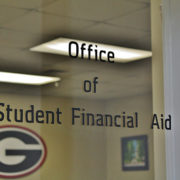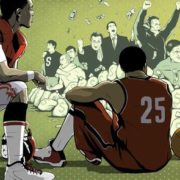“What’s best for college athletics?” You’d think that would be the guiding question for the NCAA — college athletics governing organization. But a better tagline seems to be, “Figure it out on your own.”
While that might appear to be a liberating settling place, facts say otherwise.
While sports programs at about 60 major sport-playing schools (those with household names) are self-sustaining financially, all the rest (over 200 schools) struggle financially.
While each school might appear to be a boat on its bottom, that’s not the case at all. Here’s why. One of the ways the ‘have nots’ generate athletic income is to schedule away-games against the the ‘have’s.’
With the NCAA’s affirmation that conferences and schools can make independent decisions, schools in two major athletic conferences–the Big Ten and Pacific 12–have decided to cancel non-conference football games for the 2020 season. Other major conferences–the Atlantic Coast, Southeastern, and Big 12–may follow suit.
The cancellations won’t have a significant impact on big-time schools financially because they will continue to reap substantial benefits from playing conference games. But that’s not the case for lower-tier schools. They need the money from those games.
Take, for example, the financial impact on schools that would have played at Big Ten schools this fall. Florida Atlantic University was to have opened the 2020 football season at Minnesota in exchange for a $1.8 million guarantee. Bowling Green and Buffalo were scheduled to play at Ohio State for a combined take of $3 million. Bowling Green expected to get a second big check from visiting Illinois.
Three other schools—Northern Illinois, Ball State, and Central Michigan—also had two games scheduled against Big Ten opponents. Thirteen other of the so-called ‘mid-majors’ were expected to play against Big Ten programs. Those 13 programs will lose out on $10 million-plus combined.
After the Big Ten and PAC-12 made their decisions to cancel non-conference games, USAToday estimated that the cost to non-conference opponents would be $45 million-plus.
The financial implications get even worse for smaller programs. If FAU plays football this fall, SUNY Stony Brook will visit Boca Raton a week after the Owls were to have played at Minnesota. On that weekend, the shoe Minnesota wore a week earlier will be for the Owls to wear. SB’s guaranteed take from playing that game is $400,000. The problem for FAU is clear: money gained from playing Minnesota is gone, but the need to pay SB remains.
The college sports financial system is built on stratified levels, such that payees become payers.
Where will the lost revenue come from? For schools like FAU, a good share of athletic revenue comes from non-athletic sources, including transfers from the general university budget and student fees. But the financial stress from COVID-19 is affecting universities writ large.
Schools will be hard-pressed to allocate more money to athletics because they are facing steep financial pressure on the academic and operations sides of the ledger.
To respond, some schools are eliminating non-revenue generating sports, like wrestling and track. Some of the same schools–and plenty of others–are making budget cuts by eliminating athletic staff positions.
Where will things settle? When I asked a colleague what he thought, he put it this way: “The entire college sports financial model is being broken apart, and its vulnerability to disruptive events (like the pandemic) is being exposed. He added: “For me, the big question is: Will whatever emerges reflect lessons learned and be sustainable?”
That’s a question the NCAA should be asking.



